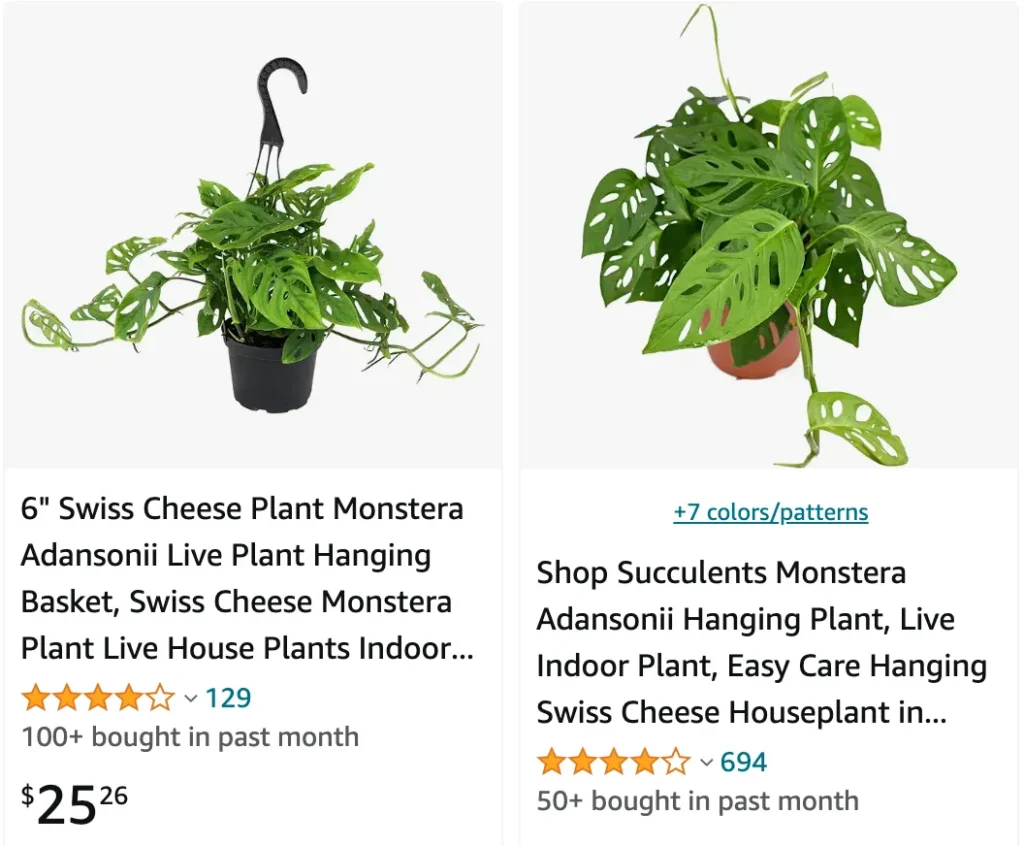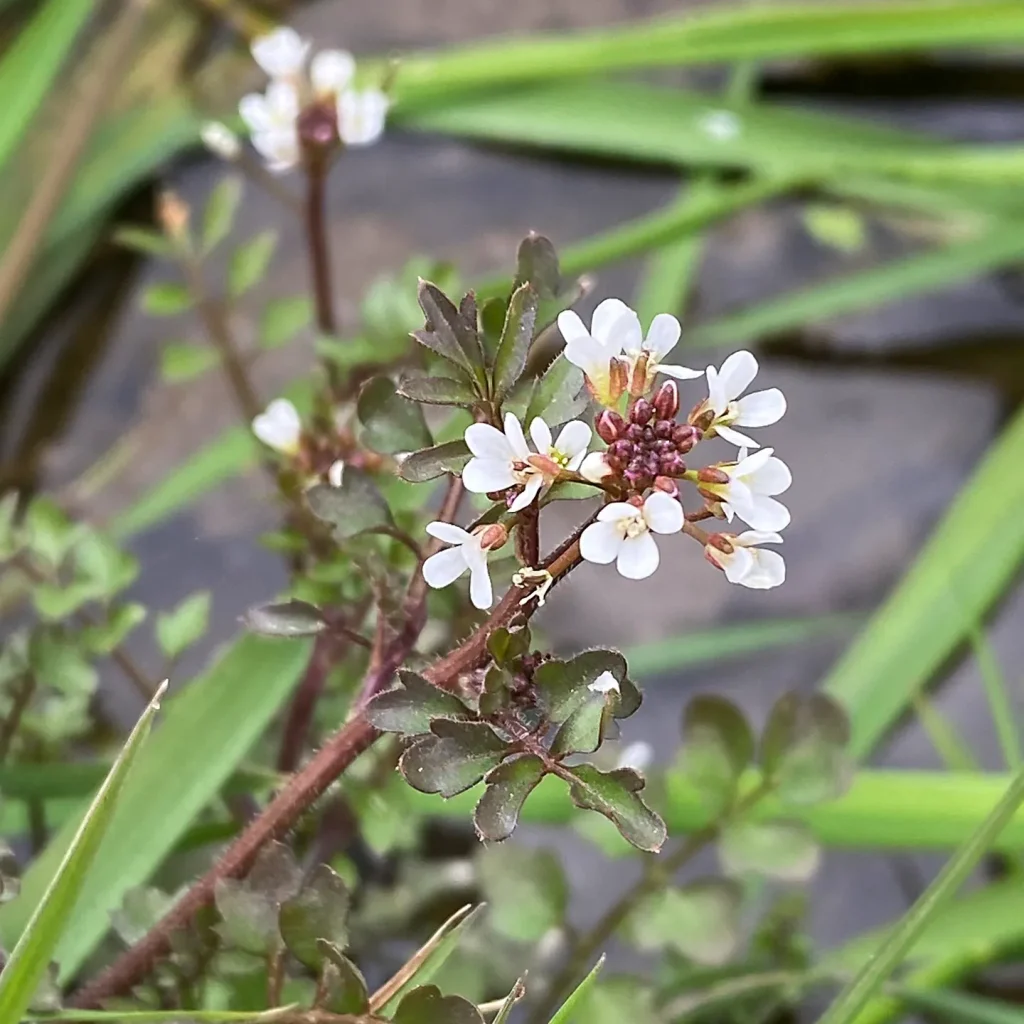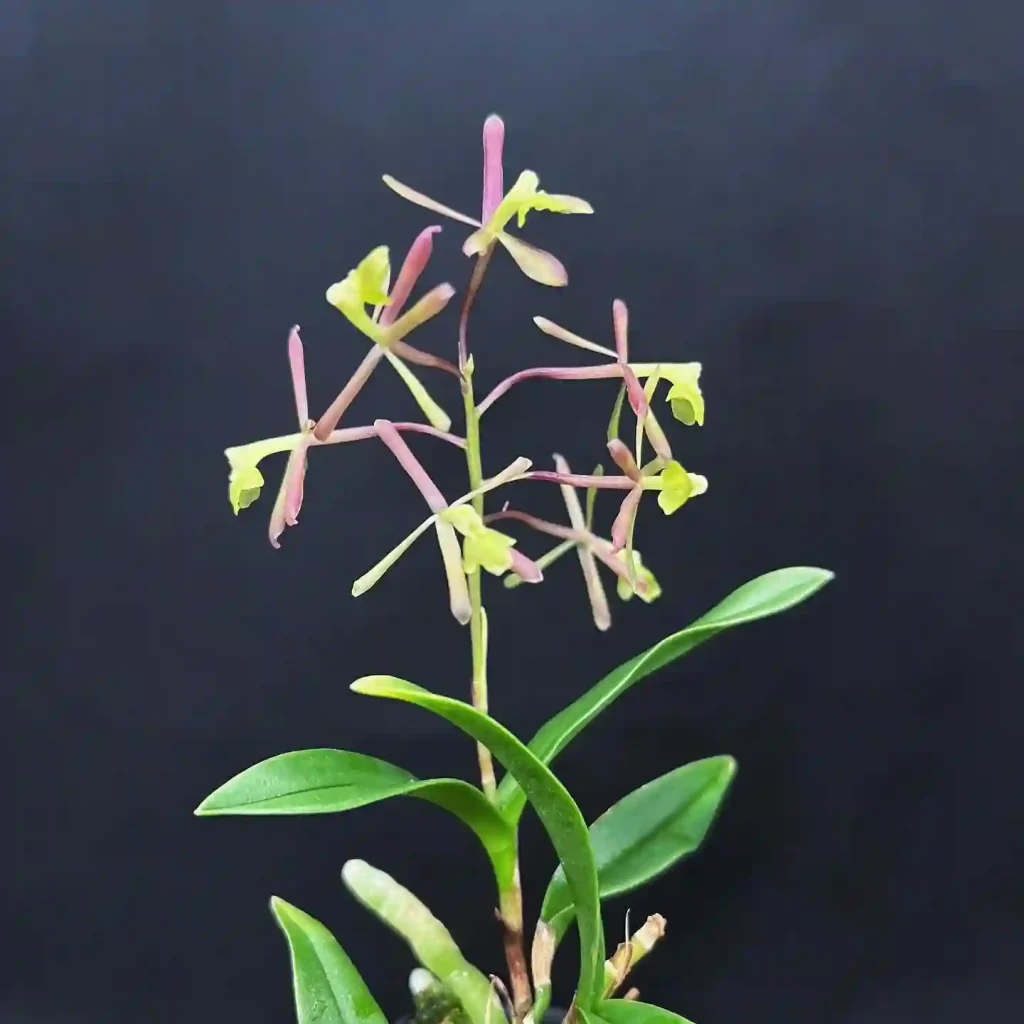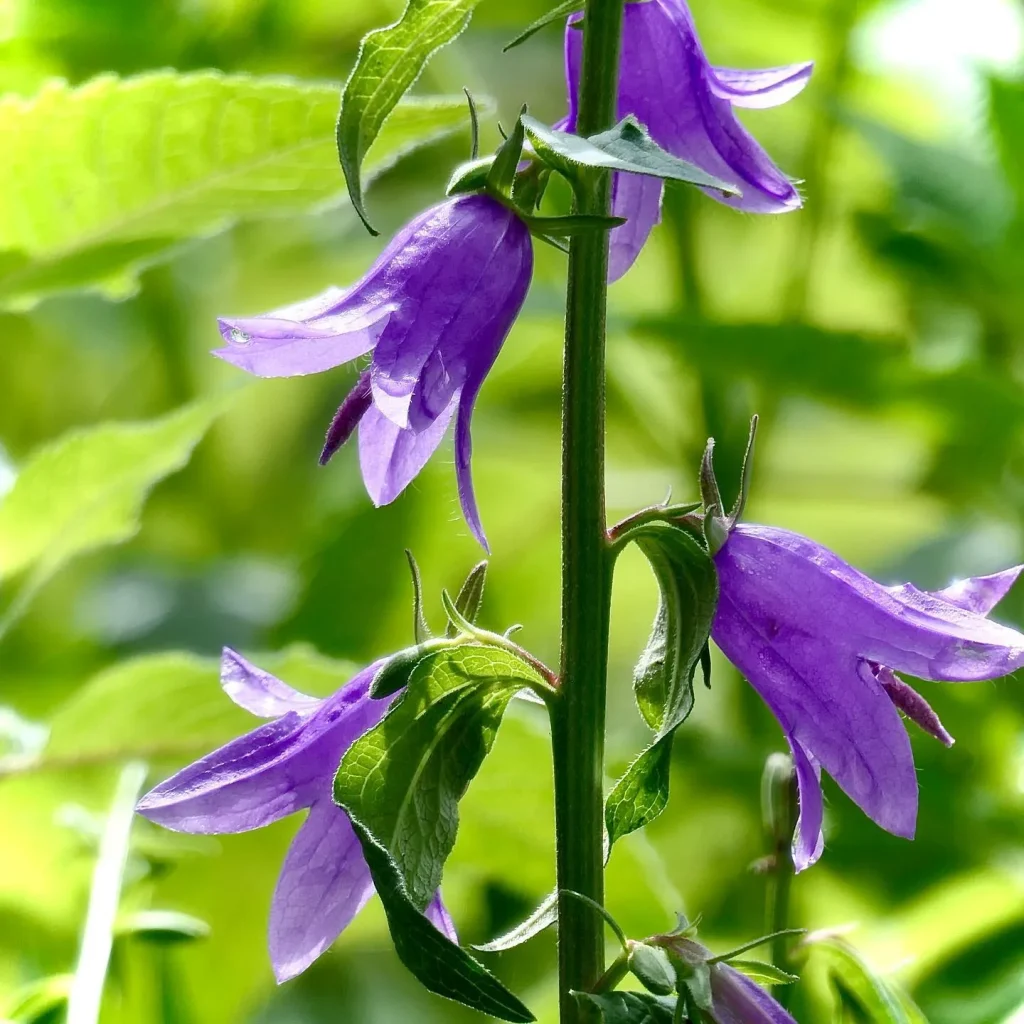
Frequently Asked Questions about Monstera Adansonii
Hi, I’m Ferb Vu, and I’m here to answer your questions about Monstera Adansonii. This plant, also known as the Swiss Cheese Vine Plant, is a favorite among indoor gardeners. Its unique appearance and easy care make it a popular choice. Let’s dive into some common questions.
67 Species in Genus Monstera
What is Monstera Adansonii?
Monstera Adansonii is a tropical plant native to Central and South America. It’s known for its distinctive leaves, which have natural holes or fenestrations. This feature gives it the nickname “Swiss Cheese Vine Plant”. The plant belongs to the Araceae family and is closely related to Monstera Deliciosa.
How Do I Care for Monstera Adansonii?
Caring for Monstera Adansonii is relatively easy, making it ideal for both beginners and experienced plant enthusiasts.
Light Requirements
Monstera Adansonii thrives in bright, indirect light. Direct sunlight can scorch its leaves, while too little light can slow its growth. An east or west-facing window with filtered light works well.
Watering Needs
Water your Monstera Adansonii when the top inch of soil feels dry. Overwatering can lead to root rot, so ensure the pot has good drainage. In the growing season, water more frequently, and reduce watering in the winter.
Humidity and Temperature
This plant loves humidity. Aim for a humidity level of 60% or higher. If your home is dry, consider using a humidifier or placing the plant on a humidity tray. The ideal temperature range is between 65-80°F (18-27°C).
Soil and Fertilizer
Use a well-draining potting mix, such as one designed for aroids or a mix of peat, perlite, and orchid bark. Fertilize monthly during the growing season with a balanced, water-soluble fertilizer diluted to half strength.
How Does Monstera Adansonii Compare to Monstera Deliciosa?
While both Monstera Adansonii and Monstera Deliciosa are from the same family, they have some differences.
Leaf Structure
Monstera Deliciosa has larger leaves with more pronounced splits and holes as it matures. In contrast, Monstera Adansonii has smaller, more elongated leaves with oval-shaped holes.
Growth Habit
Monstera Adansonii tends to climb more than Monstera Deliciosa, making it suitable for hanging baskets or training up a moss pole. Monstera Deliciosa can become quite large and bushy.
Care Requirements
Both plants have similar care needs regarding light, water, and soil. However, Monstera Deliciosa can handle slightly lower humidity levels compared to Monstera Adansonii.
Common Problems and Solutions
Like any plant, Monstera Adansonii can face a few challenges. Here are some common problems and how to solve them.
Yellow Leaves
Yellow leaves can result from overwatering or poor drainage. Check the soil moisture and adjust your watering schedule. Ensure the pot has drainage holes to prevent water from sitting in the soil.
Brown Leaf Tips
Brown tips usually indicate low humidity or underwatering. Increase the humidity around the plant and ensure it gets consistent moisture.
Pests
Monstera Adansonii can attract pests like spider mites and aphids. Inspect the plant regularly and treat infestations with insecticidal soap or neem oil.
How to Propagate Monstera Adansonii?
Propagation is a fun and rewarding way to multiply your Monstera Adansonii. The easiest method is through stem cuttings.
Step-by-Step Guide
- Select a Healthy Stem: Choose a stem with at least one node and a few leaves.
- Cut Below the Node: Using a clean, sharp knife or scissors, cut just below a node.
- Place in Water or Soil: You can root the cutting in water or directly in soil. If using water, change it every few days to prevent stagnation.
- Wait for Roots to Develop: In a few weeks, you should see roots forming. Once the roots are a few inches long, you can transplant the cutting into soil if you started in water.
Benefits of Growing Monstera Adansonii
Growing Monstera Adansonii offers several benefits beyond its aesthetic appeal.
Air Purification
Like many houseplants, Monstera Adansonii helps purify the air by removing toxins and improving indoor air quality.
Mood Enhancement
Caring for plants can reduce stress and boost your mood. The lush green foliage of Monstera Adansonii can create a calming environment.
Versatility
Monstera Adansonii is versatile in its display options. Whether you train it to climb, let it trail, or place it in a hanging basket, it adds a touch of nature to any space.
Monstera adansonii vs obliqua
In my experience, Monstera adansonii and Monstera obliqua are often confused, but they’re quite different. The adansonii is more common and robust, with thicker leaves and more prominent fenestrations. On the other hand, the obliqua is much rarer and has incredibly delicate, almost paper-thin leaves with much larger holes, sometimes making it look more like lace. I find adansonii easier to care for and more forgiving, whereas obliqua requires a more controlled environment to thrive.
Monstera adansonii trailing vs climbing
I’ve experimented with both trailing and climbing Monstera adansonii, and each method offers a unique aesthetic. When trailing, the plant cascades beautifully from a hanging basket, creating a lush, flowing effect. As a climber, especially when given a moss pole or trellis, it tends to grow more vigorously and produce larger leaves. Personally, I prefer the climbing look because it mimics the plant’s natural habit and adds a vertical element to my plant collection.
Monstera adansonii narrow form vs wide form
I’ve grown both narrow and wide forms of Monstera adansonii, and each has its charm. The narrow form has elongated, more slender leaves that give a sleek and delicate look. The wide form, with its broader leaves, provides a fuller, more lush appearance. Depending on the space and the effect I want, I switch between them, but I often find the wide form more satisfying because it fills up space nicely and looks more substantial.
Monstera adansonii vs acuminata
Monstera acuminata is a close relative to adansonii but has some distinctive features. The leaves of acuminata are typically more elongated and less fenestrated compared to adansonii. I find acuminata to be a bit more understated, which can be appealing in a more minimalist plant arrangement. However, for a more dramatic and textured look, I usually lean towards adansonii.
Monstera adansonii vs esqueleto
When it comes to Monstera esqueleto, its name, meaning “skeleton,” truly describes its appearance. The fenestrations on esqueleto are more exaggerated, giving it an almost skeletal structure. This makes it stand out even more than the adansonii. While both are stunning, I prefer esqueleto for its unique and striking appearance, though it can be more challenging to find and care for.
Monstera adansonii vs laniata
Monstera laniata and adansonii are often confused, but I’ve noticed that laniata tends to have larger, more elongated leaves with less frequent but larger fenestrations. Laniata feels like a more dramatic version of adansonii. When I want to make a statement with fewer plants, laniata is my go-to. For filling up a space with lots of greenery, adansonii wins.
Monstera adansonii vs Philodendron
Comparing Monstera adansonii to Philodendrons, I appreciate that Philodendrons come in so many varieties, each with its unique leaf shape and color. Philodendrons are generally easier to care for and more tolerant of varying conditions. However, Monstera adansonii’s distinctive holes and trailing habit make it a more eye-catching centerpiece. I often mix both in my collection for a diverse range of textures and forms.
Monstera adansonii vs Rhaphidophora tetrasperma
Rhaphidophora tetrasperma, often called the “mini Monstera,” is quite different from Monstera adansonii despite the nickname. Tetrasperma has split leaves like a mini deliciosa, but without the holes of adansonii. It’s faster-growing and more compact. I enjoy the neat, tidy growth of tetrasperma for smaller spaces, while adansonii’s trailing vines are perfect for a wilder, more untamed look.
Monstera adansonii vs Monstera friedrichsthalii
Monstera friedrichsthalii is another name often used interchangeably with adansonii, but they can have subtle differences in leaf shape and size. Some say friedrichsthalii has more elongated leaves. Personally, I treat them as the same for care purposes, but I enjoy observing the slight variances in leaf structure and fenestrations that make each plant unique.
Conclusion
Monstera Adansonii is a fantastic plant for any indoor garden. Its unique look and easy care make it a favorite among plant enthusiasts. By following the care tips and solving common problems, you can enjoy a healthy and vibrant Monstera Adansonii in your home. Happy planting!



